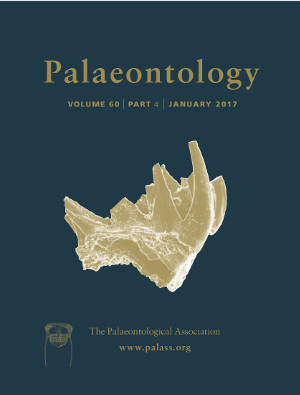Reg. Charity No. 1168330

Knowledge of the conodont skeleton, in terms of the morphology of the elements and the positions they occupy, provides the foundation for understanding of homology, taxonomy and evolutionary relationships in conodonts. This knowledge also underpins analyses of conodont functional morphology and feeding. Direct evidence of skeletal anatomy and apparatus architecture comes from natural assemblages: fossils that preserve together the articulated remains of the conodont apparatus, either collapsed onto a bedding plane or as clusters of elements in which juxtaposed and overlapping elements have been fused together by diagenetic minerals. Here we describe six clusters of the biostratigraphically important conodont Hindeodus parvus from the Lower Triassic Shangsi section, Sichuan Province, South China. Five of these clusters represent the partial remains of articulated skeletons, providing direct evidence of the number and arrangement of elements in the apparatus. Combined with data from previously published natural assemblages this provides a test of the hypothesis that Triassic conodonts had a reduced dentition. Hindeodus parvus possessed a complete raptorial array of two M and nine S elements (unpaired S0; symmetrically paired S1, S2, S3, S4); the paired P1 locations were occupied by carminiscaphate elements, but the apparatus lacked P2 elements. This is consistent with broader evidence for a particularly high degree of integration and constraint operating on the S–M array of morphologically complex conodonts, leading to conserved architecture of the array over a period of more than 250 million years. The loss of elements from the P domain implies a change in food processing ability and, given the predominance of data from P elements in conodont taxonomy and biostratigraphy, the hypothesis of element loss from the P domain has significant implications for the broader understanding of conodont diversity and evolutionary patterns.